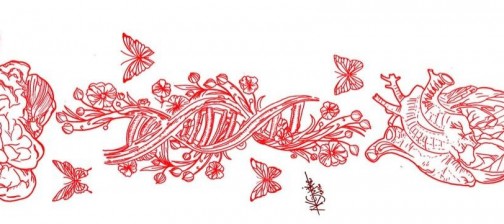Just like Picasso displayed his art on a canvas, Terrence Malick showcases his on a screen. Although both men are internationally known for their respective fields of titillating art, the late Spaniard lavished in his fame, while the Texas-born Malick practices a modest and reserved lifestyle. He is rarely seen promoting his own films at film conferences, and maintains a tendency to keep away from the lens of the media, something that may be considered unorthodox for a popular Hollywood director.
One of his more recent films, which also marks merely his sixth time as director, deals not with a banal or purely commercial film, such as automobile robots fighting or secret agents killing one another, but concentrates rather on something that concerns us all, something that has puzzled mankind since the inception of time, the big question of life.
At the beginning of the film, one of the narrators introduces us to perhaps the most essential theme of the story, as she asserts, “there are two ways through life, the way of nature and the way of grace.” The character who is solely known as O’Brien, played by Brad Pitt, represents “the way of nature”. Although he prays to a divine being and attends church, apparently practicing the Christian religion, he nevertheless possesses a mindset and executes physical actions that are closer to that of the merciless “nature”. On the other hand, his “naive” wife, as labeled by O’Brien, embodies the submissive but all-loving “grace”. Unlike her pessimistic husband, she has a positive outlook on life, but her love-bound and obedient “grace” hinders her ability to protest at the cruel “way of nature”.
“The two ways” are clearly an important aspect of the film, however Malick also offers us a glimpse into what might be interpreted as the creation of the universe and subsequently of our planet, and the initial life that inhabited it. As a comparison to the lives of the few human characters, the scenes of the universe might inspire the viewer to ponder the extent to which we, as humans, are really significant.
Another though-provoking visible feature is the regular insertions of non-related scenes to the main narrative. Whether these characteristic scenes can be interpreted as a dream, by the older Jack (Sean Penn), the son of O’Brien, or some other sort of eternal divine place, leaves the viewer in a mind-boggling state. Some scenes are mere random shots that cannot be understood at first sighting, but would require extensive studying and sharp analytical skills, although even that might not be sufficient as it might just scratch the surface of the hidden treasure that this artistic motion picture harbors.
It would be wise for one to note that The Tree of Life is not an action-packed, physical, big-budget movie that immediately offers all the answers, but rather a film with a slow journey that must be met with alert visual and acute listening attention, in order to capture the subliminal messages that the director is seeking to convey. The film shares the same characteristics like that of a novel that is extremely challenging to decipher. However, even if one manages to produce several credible arguments for what the film means, that will be his or her own interpretations, therefore the universe of the story within the narrative can always be expanded, for reasons that the film, just like a novel, leaves a myriad of questions unanswered.




